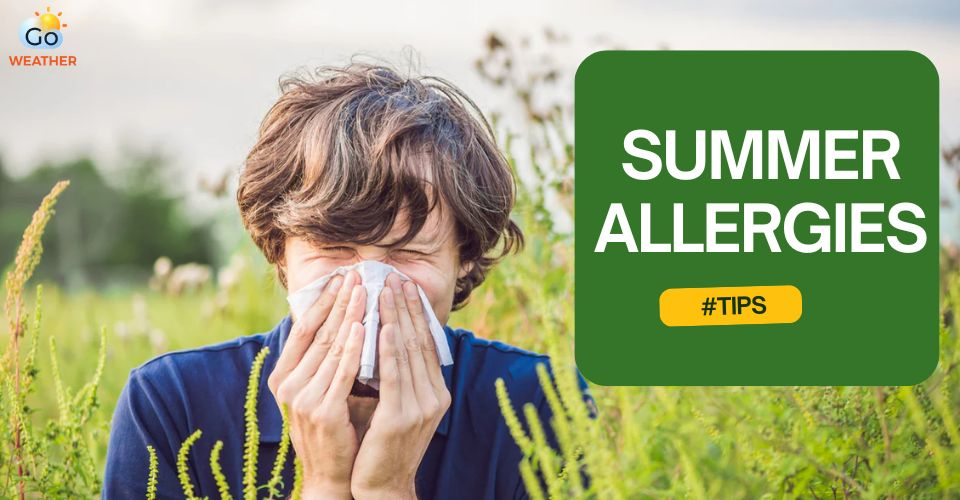Avoid These Summer Skin Problems to Look Perfect in Hot Weather
While the hot season is full of long days and beautiful weather, it also brings various summer skin problems. Dryness occurs in winter, while itching, rashes, and other issues might occur in summer. Continue reading to see if you are experiencing any bad summer skin conditions and learn ways to deal with them!
.jpg)
What are the skin problems in summer?
Dry Skin
Although dry skin is commonly associated with winter, it may also occur in the summer. Sun exposure, air conditioning, and irritants such as seawater and chlorine may all dehydrate the skin.
If you experience frequent dryness throughout the summer, you may need to change your moisturizing routine. To seal in hydration, apply a moisturizing product such as hyaluronic acid right after showering.
.jpg)
Dry skin is common in summer
Avoid hot water and fragrances, as they can further deplete your skin's natural oils. Instead, use lukewarm water and fragrance-free formulations.
You can also consider keeping the temperature in your home a little higher - your energy bills will be cheaper as a bonus!
Sunburns - Common Summer Skin Problems
Sunburns are one of the most serious summer heat skin problems to avoid. They are annoying, but they also indicate that your skin has been harmed by UV radiation, which might lead to skin cancer.
Although sunscreen with an SPF of at least 30 is required all year, summer requires even more protection.
Because you will be spending more time outside, remember to reapply your sunscreen every two hours or after being in the water.
.jpg)
Avoid getting sunburns in summer
Wear UV-blocking clothes, wide-brimmed hats, and sunglasses for further protection. (Suggested: Sunny weather outfits)
If possible, remain indoors or in the shade between 10 a.m. and 4 p.m. when the sun's rays are most intense.
Acne Breakouts
When the temperature rises, people tend to sweat more. When sweat combines with bacteria and oils on the skin, the pores clog, causing acne to develop.
If you have acne-prone skin, summer usually means more outbreaks. Even if you don't have acne-prone skin, you're more likely to get a pimple or two in the summer than at any other time of year.
.jpg)
Acne breakouts
Blotting sweat from your skin with a clean towel or cloth is an effective way to avoid acne during the sticky months. However, wiping may irritate your skin and "wipe" debris, grit, and bacteria into your pores, resulting in a breakout.
Furthermore, be aware of the products you use on your skin. For instance, use non-comedogenic products for your face, back, neck, and chest. Check if the label states that the product is "oil-free" or "won't clog pores."
Folliculitis - Common Summer Skin Problems
Every hair on your body grows from a follicle. An infection of the follicles causes folliculitis. Infected hair follicles resemble pimples but are irritating and painful.
To lower your chance of developing folliculitis this summer, quickly change out of tight training clothes such as bicycle shorts and shower.
.jpg)
Folliculitis is among the summer skin concerns
Furthermore, stay away from hot tubs and whirlpools if you are unclear whether the acid and chlorine levels are appropriately controlled.
Because so many individuals acquire folliculitis from hot tubs, there is a condition known as "hot tub folliculitis."
Heat Rash
Several skin rashes can arise during the hot summer months. Heat rash (or miliaria) is a relatively common summer skin issue. It is also one of the serious summer season diseases.
This occurs when sweat glands become clogged, preventing sweat from escaping the body and accumulating beneath the skin. This results in a rough and painful rash.
.jpg)
Heat rash
In fact, anything you can do to minimize sweating will help lower your risk of heat rash.
It is also recommended that you exercise in lighter-weight clothing, work out indoors or during cooler parts of the day (early morning), and take cooler-temperature showers.
Chafing
Friction is the primary cause of discomfort; however, wetness can increase it.
Hot weather and activity are major triggers for the uncomfortable rash that results, so avoiding chafing is essential for protecting your skin, whether you're heading to the beach or planning a morning run.
.jpg)
Chafing is one of the skin problems during summer
Begin by wearing properly fitted, sweat-wicking clothes and swiftly changing out of damp clothing.
If you're concerned about constant friction in a specific location during outdoor activity, such as your thighs or armpits, use anti-chafing cream or petroleum jelly to lubricate.
Summer Allergies
Summer skin allergies are reactions that occur when the skin is exposed to triggers like heat, humidity, sunlight, or allergens such as pollen and certain plants. These reactions can manifest as rashes, hives, or contact dermatitis.
Common summer allergens include insect bites and sunscreens with irritating ingredients.
.jpg)
Summer allergies
To prevent summer skin allergies, it's important to stay cool and wear breathable fabrics. You should also apply hypoallergenic sunscreen, avoid known allergens, and rinse off after swimming in chlorinated pools or saltwater.
You can read more in our guide to summer allergy tips.
Poison Ivy
This summer, poison ivy, like poison oak and poison sumac, may easily invade your outdoor hobbies, from hiking to gardening. The plant produces oils that can cause a severe itching rash.
Knowing how to recognize and avoid these plants is crucial when it comes to prevention.
.jpg)
Poison ivy
However, if you are hiking, camping, or otherwise surrounded by vegetation, you may not be able to investigate every plant in the area. Wearing long pants, tall socks, or both can help protect you in that case.
Melasma - Common Summer Skin Problems
Melasma is another skin problem caused by excessive sun exposure in the summer. It refers to brown or grey "sun spots" on the face and neck.
The sun's dangerous UV rays frequently influence our skin's pigmentation, known as melanin.
Melanin is crucial for defending our skin from the sun. When we have too much, it goes into overdrive and floods certain areas, making them look darker.
.jpg)
Melasma
To avoid melasma, you should protect your skin from the sun by using broad-spectrum sunscreen. For better protection, choose a hat with an ultraviolet protection factor (UPF) number on the label.
Conclusion
Summer means spending more time outside. Yet, greater exposure to things such as sunshine, insects, and hazardous plants can result in itchy and painful rashes, causing skin discomfort. Fortunately, there are a few basic tips you can take to avoid undesirable summer skin problems, which may swiftly sideline summer fun.











0 Comments
Leave a Comment
Your email address will not be published. Required fields are marked *